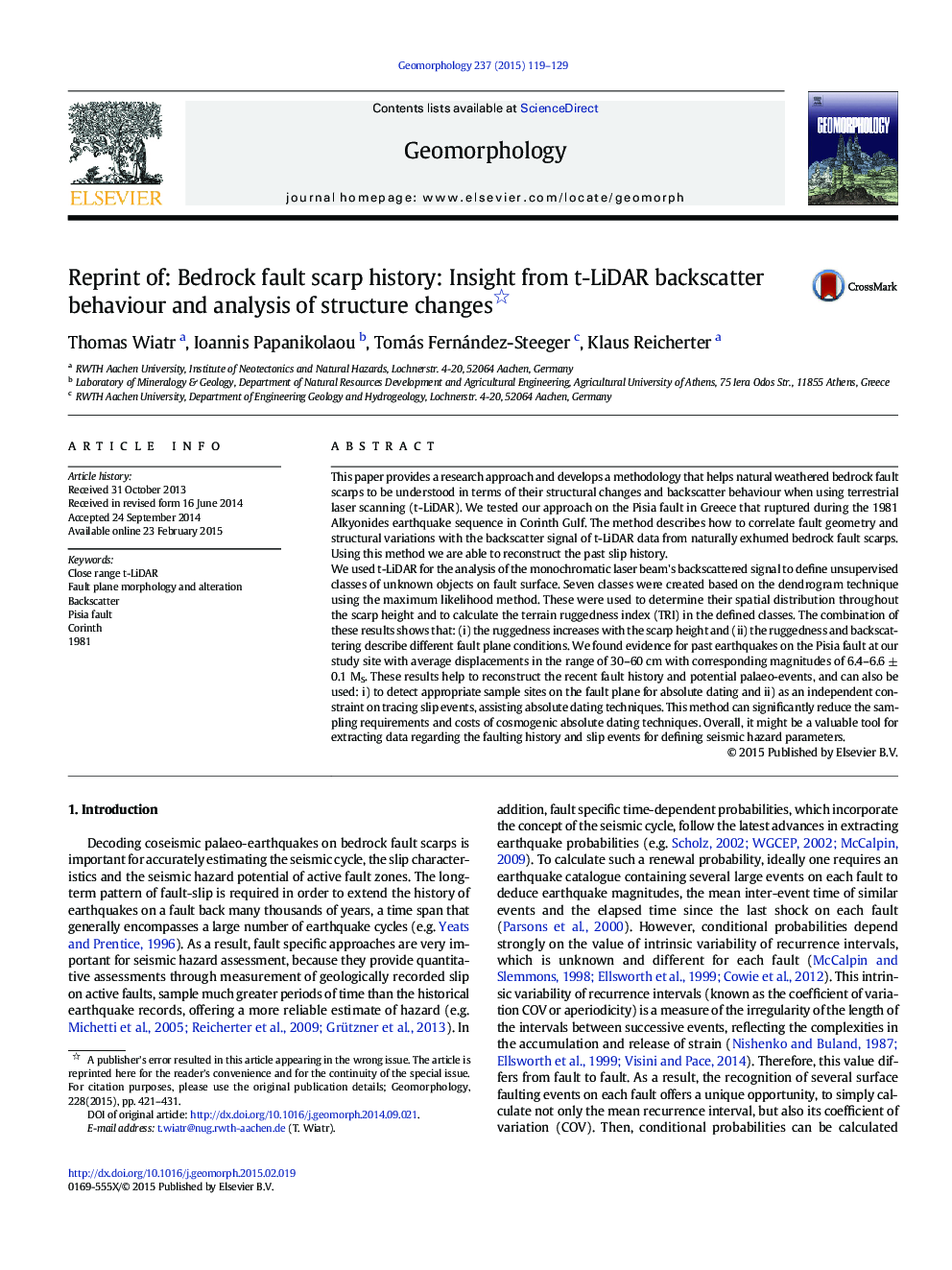| Article ID | Journal | Published Year | Pages | File Type |
|---|---|---|---|---|
| 6432225 | Geomorphology | 2015 | 11 Pages |
â¢Reconstruction of past earthquakes on naturally exposed limestone bedrock fault scarps is possible by using t-LiDAR.â¢The comparison of roughness and backscatter signal are potential methods for support the knowledge of individual slip.â¢That workflow is a supporting tool for the decision of interesting sample areas for absolute dating.
This paper provides a research approach and develops a methodology that helps natural weathered bedrock fault scarps to be understood in terms of their structural changes and backscatter behaviour when using terrestrial laser scanning (t-LiDAR). We tested our approach on the Pisia fault in Greece that ruptured during the 1981 Alkyonides earthquake sequence in Corinth Gulf. The method describes how to correlate fault geometry and structural variations with the backscatter signal of t-LiDAR data from naturally exhumed bedrock fault scarps. Using this method we are able to reconstruct the past slip history.We used t-LiDAR for the analysis of the monochromatic laser beam's backscattered signal to define unsupervised classes of unknown objects on fault surface. Seven classes were created based on the dendrogram technique using the maximum likelihood method. These were used to determine their spatial distribution throughout the scarp height and to calculate the terrain ruggedness index (TRI) in the defined classes. The combination of these results shows that: (i) the ruggedness increases with the scarp height and (ii) the ruggedness and backscattering describe different fault plane conditions. We found evidence for past earthquakes on the Pisia fault at our study site with average displacements in the range of 30-60 cm with corresponding magnitudes of 6.4-6.6 ± 0.1 MS. These results help to reconstruct the recent fault history and potential palaeo-events, and can also be used: i) to detect appropriate sample sites on the fault plane for absolute dating and ii) as an independent constraint on tracing slip events, assisting absolute dating techniques. This method can significantly reduce the sampling requirements and costs of cosmogenic absolute dating techniques. Overall, it might be a valuable tool for extracting data regarding the faulting history and slip events for defining seismic hazard parameters.
